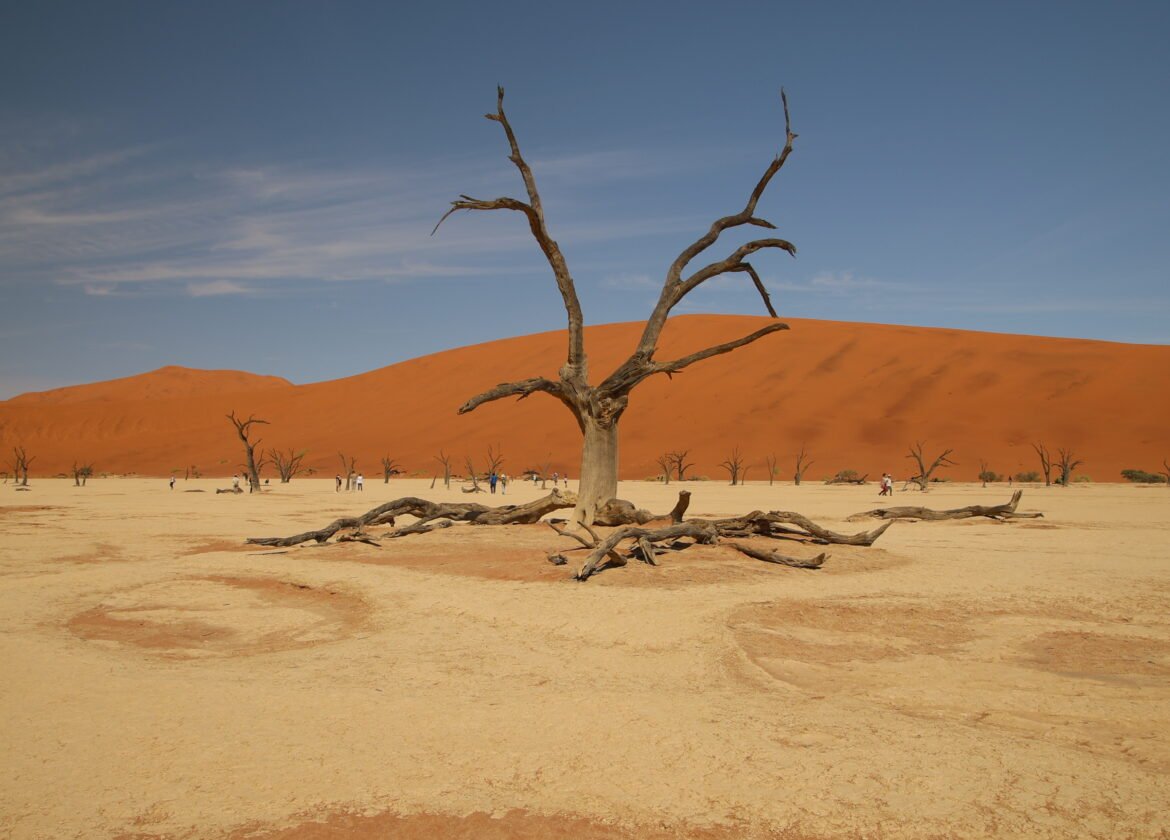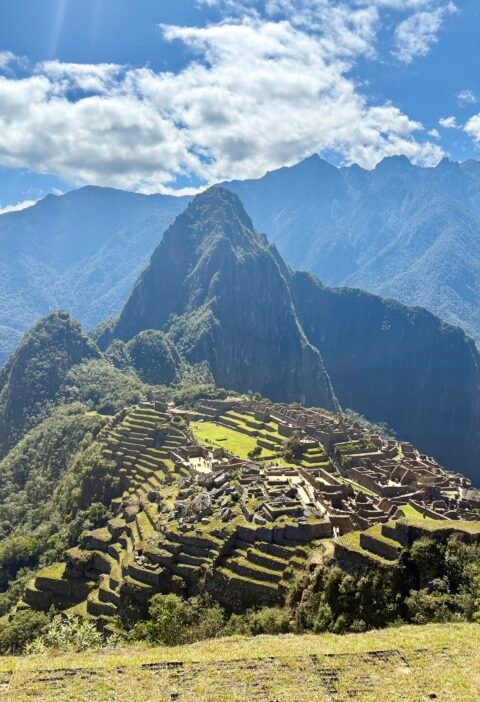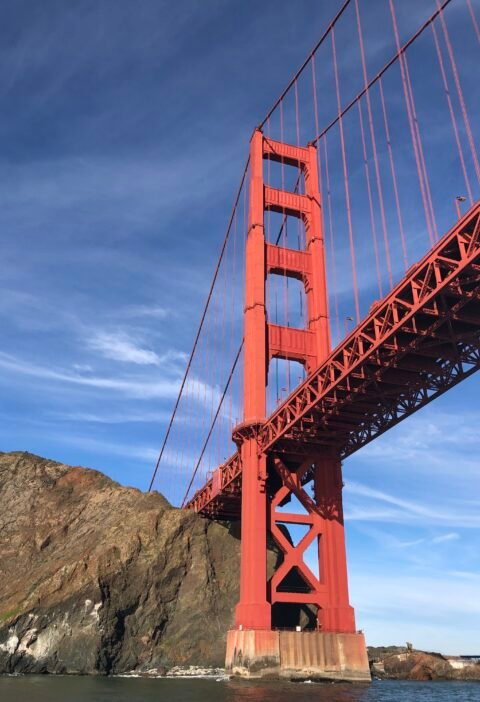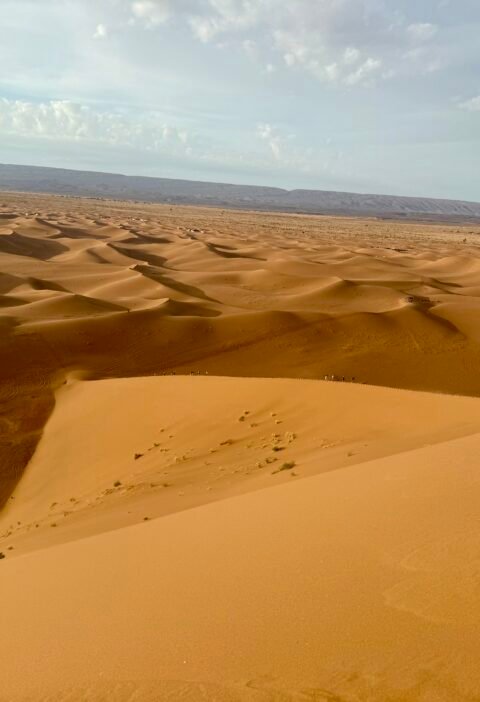
An extraordinary family road trip between wide open spaces and wildlife.
Namibia is a country that offers an incredible diversity of landscapes, and our family trip allowed us to discover unique places, each more impressive than the last. Follow us on this adventure, from an endless desert to imposing mountains, including the wildlife of nature reserves. Here's our itinerary from Windhoek to Etosha, via the Kalahari, Sossusvlei, and more!
14/8 to 18/08 Windhoek – Kalahari Desert – Sossusvlei
1. Windhoek: Gateway to Namibia
Our adventure began in Windhoek, the Namibian capital. In the heart of the country, this city is a mixture of cultures, German colonial architecture, and African modernity. Unfortunately we didn't have time to explore it.
2. The Kalahari: Immersion in the Red Desert
After leaving the capital, we headed towards the Kalahari, a desert with striking red dunes. The landscape is magical, especially at sunset. We had the chance to come across some emblematic animals such as meerkats and antelopes. Local lodges often offer gluten-free options, which made my stay even more enjoyable.
3. Sossusvlei: The Giant Sand Dunes
Our next stop was Sossusvlei, in the Namib-Naukluft National Park. It was here that we discovered the famous dunes, among the highest in the world. The ascent of Dune 45 at sunrise is an unforgettable moment. The changing color of the sand is spectacular, and the feeling of walking through this endless desert landscape is incomparable. Don't miss Deadvlei, with its fossilized trees in the middle of a salt plain.

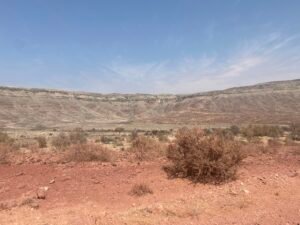






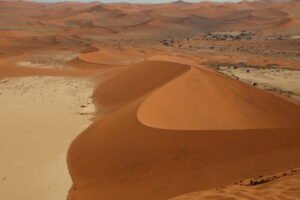



08/18 to 08/23 Swakopmund – Damaraland
4. Swakopmund and Sandwich Harbour: Between Desert and Ocean
After the heat of the desert, we popped into Swakopmund, a small coastal town with Germanic charm. It's the ideal place for a little relaxation, and there are many activities: quad bike rides, horseback riding, and even boat trips to watch dolphins. Nearby is Sandwich Harbor, where the desert meets the ocean. Traveling through the dunes in a 4x4 and seeing the dunes plunge directly into the waves is a superb spectacle.
In the hotel we stayed in, the Mirage Desert Lodge, we had the opportunity to taste kudu meat and oryx meat: it was really delicious, even better than beef.
5. Damaraland: Lunar Landscape, Rock Engravings and Etendeka
We then headed to Damaraland, a fascinating region of mountains and desert plains. It was here that we visited Twyfelfontein, a UNESCO World Heritage Site for its millennia-old rock carvings. This place tells an ancient and mysterious story, and the surrounding landscapes, with their unique rock formations, create an almost supernatural atmosphere.
Another highlight of our time in Damaraland was our experience at Etendeka . Nestled in the remote mountains, Etendeka is a private reserve where wilderness reigns supreme. We spent unique moments there, far from civilization, in the heart of this preserved region. Here, wildlife roams freely, and we were lucky enough to spot oryx, mountain zebras and even desert elephants. The guided hikes in this rocky landscape, among the basalt formations, allowed us to truly reconnect with nature. Etendeka is a special place, ideal for those looking to fully immerse themselves in the wild immensity of Namibia.








08/23 to 08/27 Etosha Park – Waterberg – Windhoec
6. Etosha: Unforgettable Safari
No trip to Namibia would be complete without a safari, and Etosha National Park is one of the best places for that. We were able to observe lions, elephants, giraffes and even rhinoceroses in the wild. The park is organized around the large salt pan, an immense white plain which attracts animals to water points. The memory of wild animals drinking in their natural habitat will remain engraved in our memories.
7. Waterberg: Last Stop in the Heart of Nature
Our trip ended at the Waterberg, an imposing rock formation that is home to a variety of wildlife. This place is perfect for hiking, with marked trails allowing you to admire the surrounding nature. We were lucky enough to be able to observe black rhinos. Our plane took off quite early, we had to leave the lodge at 5:00 a.m., which is not recommended and we quickly understood why: in the middle of the night, on bush paths, zebras, giraffes and other impalas were lying on the path. It was creepy but magical at the same time. It was a perfect conclusion to our adventure in Namibia.




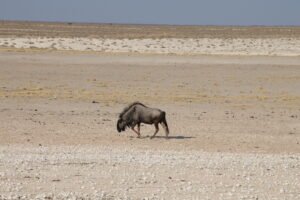


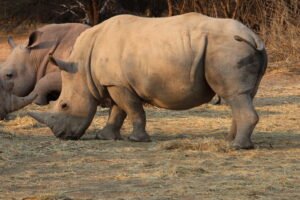
Tips for Gluten Free Travel in Namibia
Traveling to Namibia as someone on a gluten-free diet is entirely possible. Many lodges and restaurants accommodate specific dietary needs. However, it is recommended to bring some gluten-free snacks for stages in the desert where options are limited.

